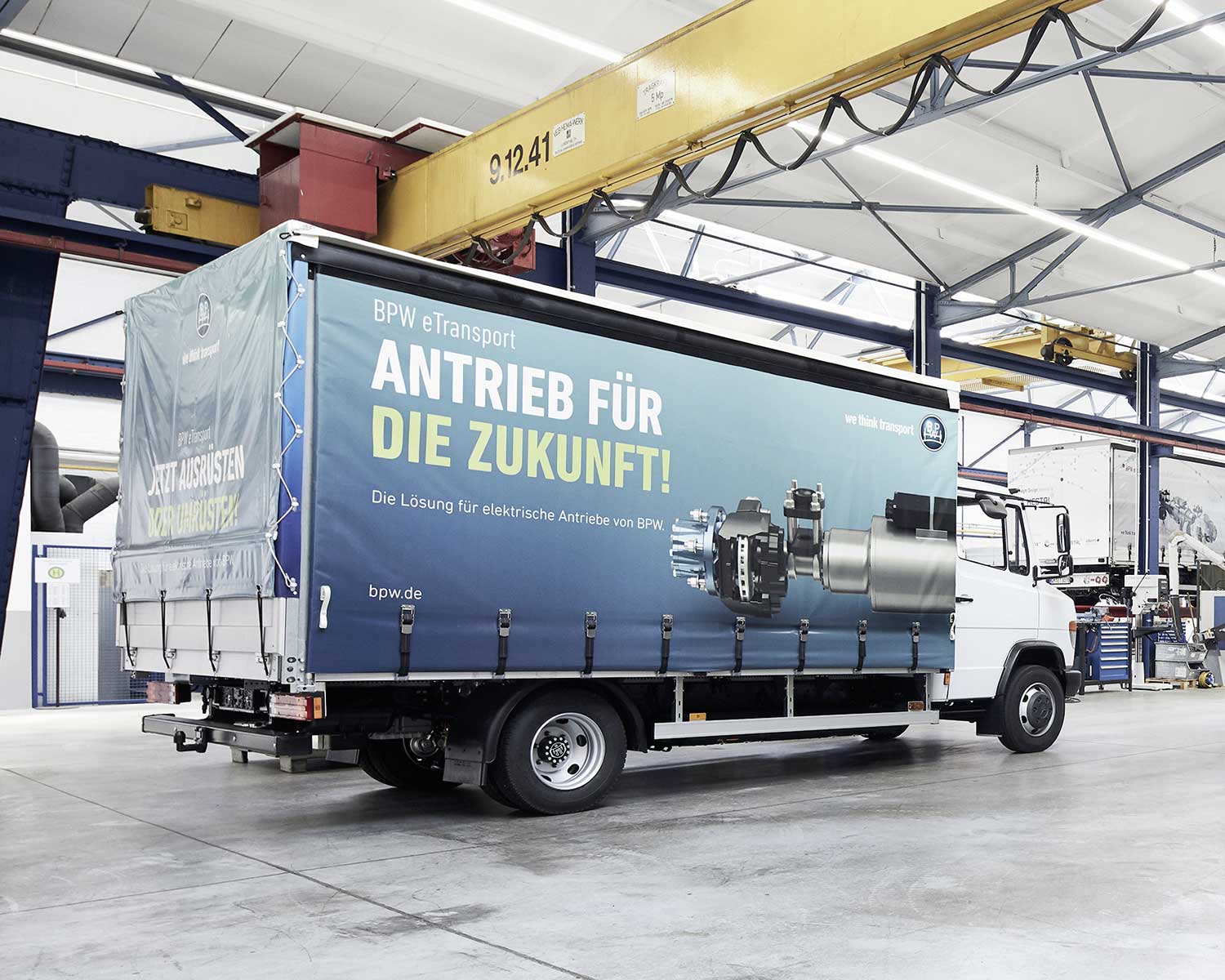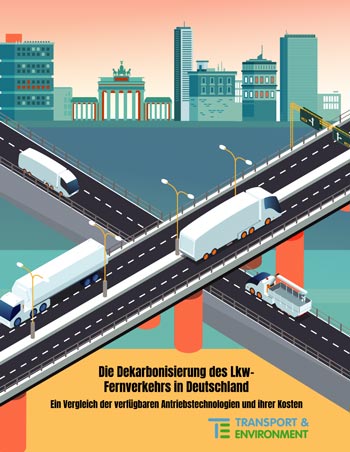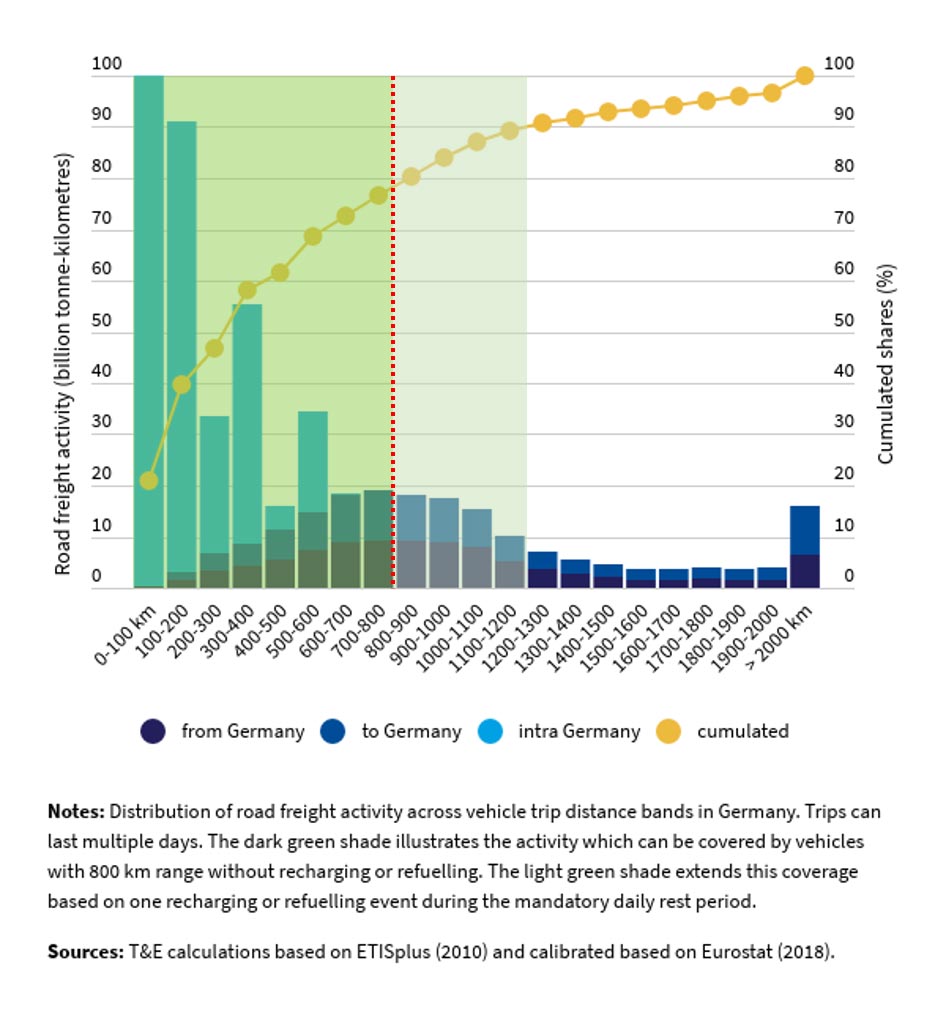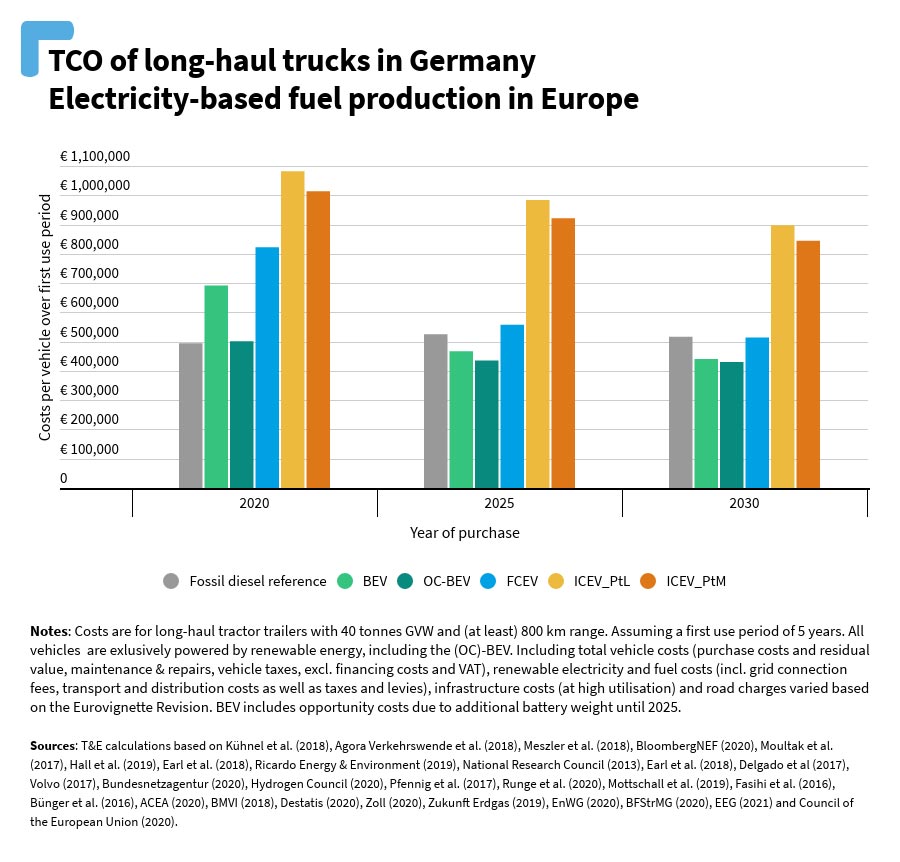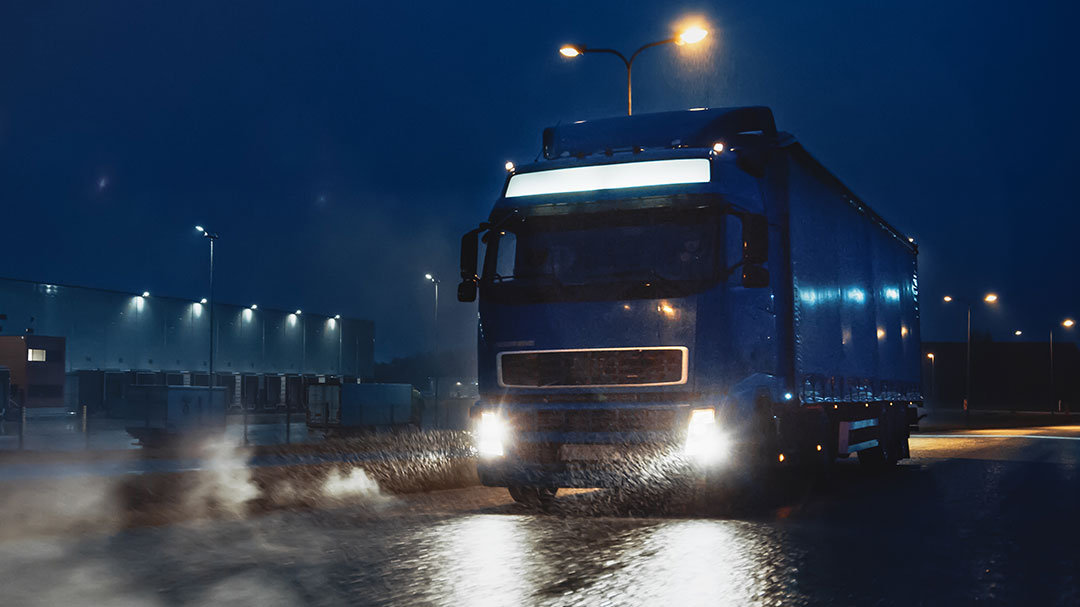Text: Oliver SchönfeldPhotos
Photos: T&E, BPW
Which technology is winning the race when it comes to zero emissions in the commercial vehicle sector? According to a recent study by the non-governmental organisation Transport & Environment, battery-electric long-haul trucks and trolley trucks come out on top in a comparison of total cost of ownership.
Greater fuel efficiency of diesel trucks, shifting freight transport to rail and waterways or higher logistics efficiency: individual aspects such as these are not enough to achieve the climate targets, according to Transport & Environment (T&E). Instead, the goal must be to be able to operate commercial vehicles in a completely CO2-neutral manner by 2050 at the latest, the non-governmental organisation (NGO) states in its study “The decarbonisation of long-distance transport in Germany” published in April. A group of experts compared five vehicle technologies with regard to their system and total cost of ownership (TCO):
• Battery electric vehicles
• Battery electric vehicles that draw their power from overhead lines
• Hydrogen-powered fuel cell electric vehicles
• Diesel vehicles powered by liquid e-fuels
• Gas vehicles powered by gaseous e-fuels
Zero emissions by 2050


